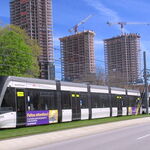crs1026
Superstar
Respectfully, my impression of your agenda in trying to separate the VIA discussion is to have one thread that speaks to “All the great things ViA is doing and has in the works and has gotten right” and a different thread for “what are the risks and deficiencies and things in passenger rail that ought to change”. Apparently voicing the latter is somehow inappropriate or of lesser concern?Which is why I tried multiple times to create a separate thread to have one for what can happen (i.e. this thread) and then one for what should happen (which could be called “fantasy rail discussions”), as the two discussions are based on completely different assumptions and environments, but Paul has regrettably shot down and undermined every single attempt of doing so for some reason...
I don’t consider the question of “How should VIA structure its Lakeshore service post-HfR” to be a fantasy discussion. Nor is “What ought to happen next after HFR launches”. Those questions have no mandated answer yet, but they are meaningful to get our heads around. We may be spectators and not professionals or decisionmakers, but isn’t that what public forums are for?
In my experience strategy generally involves exploration of strengths, weaknesses, threats, and opportunities. Personally, I’m a lot more interested in discussing the strategy and execution of strategy around rail passenger especially in Ontario, than just observing on models of trains etc. As to execution, that discussion always starts with identifying risks. It’s not a constructive discussion if we are obliged to assume that VIA and Ottawa have figured everything out and nothing might be done differently and nothing will go wrong.
Admittedly, some of the discussions get loopy, and because nothing changes quickly in this space, we often circle back into topics that have been beaten to death before. I do try to stay focused. But if challenging anything status quo means jumping to another thread....
- Paul





